Mystery History
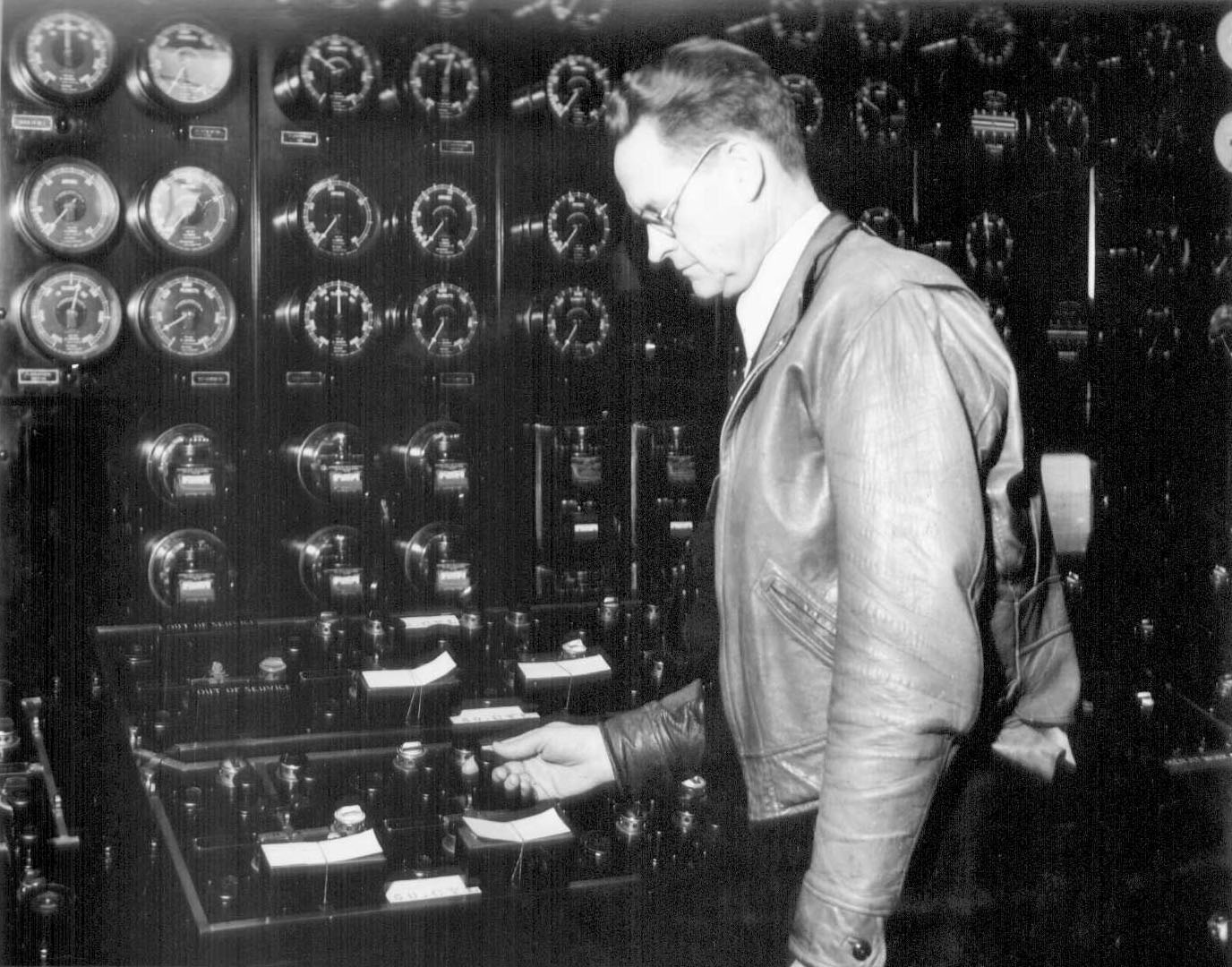 |
|
| Operator J. A. Griffitts is seen here opening the circuit breaker on the last DWP 50 cycle circuit. Taken in the old control house at RS-C in Wilmington. |
Background In the early days, the Southland was sort of an electrical enclave. Both Edison and DWP generated and distributed their power at 50hz where most parts of the country were at 60hz. Some electrical appliances worked at both frequencies, but for frequency-sensitive products manufacturers created special 50hz models just for the Southern California market. And when newcomers moved from outside the region, they paid to have their old devices converted, or simply bought new ones that would work on the 50hz grid. |
Question #1
What year did DWP convert its frequency from 50hz to 60hz?
|
Question #2
What event prompted DWP to convert its operating frequency to 60hz?
---------------------------------------- |
Question #3
What year did SCE convert its frequency to 60hz?
|
Click HERE for Answers |
* * * * * |
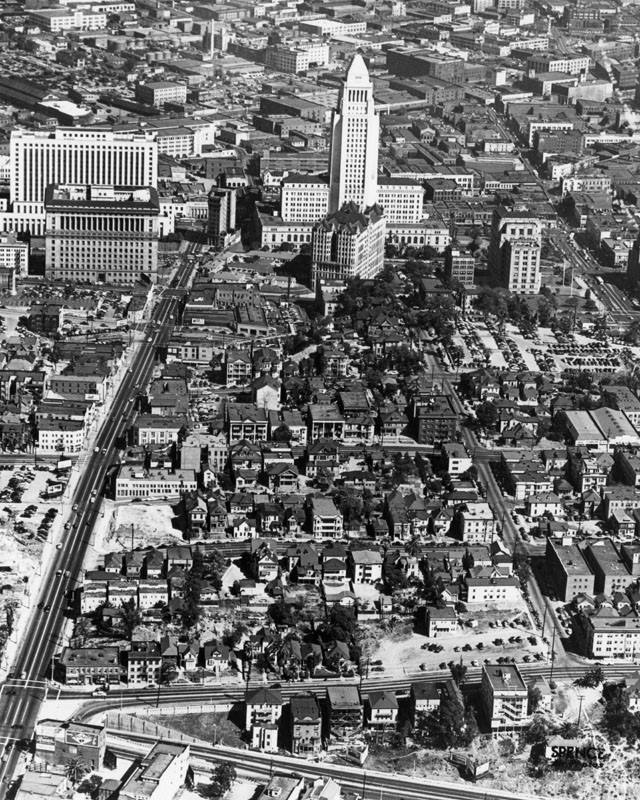 |
|
| Aerial photograph taken in 1945 from above Bunker Hill, where the DWP’s office building (JFOB) stands today, looking east toward the Los Angeles Civic Center. The ornate building in front of City Hall is the Old Hall of Records. The Hollywood and Harbor Freeways would not be constructed until the early 1950s. |
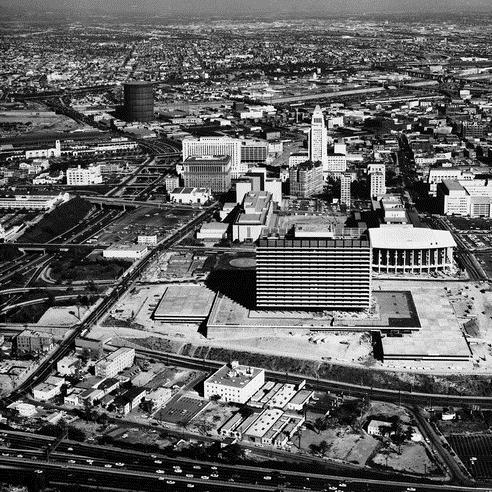 |
|
| Aerial view looking east toward the Civic Center showing a not quite completed DWP General Office Building (later JFOB), located on Bunker Hill. |
Question #1
- What year was the DWP General Office Building (GOB) constructed? _______
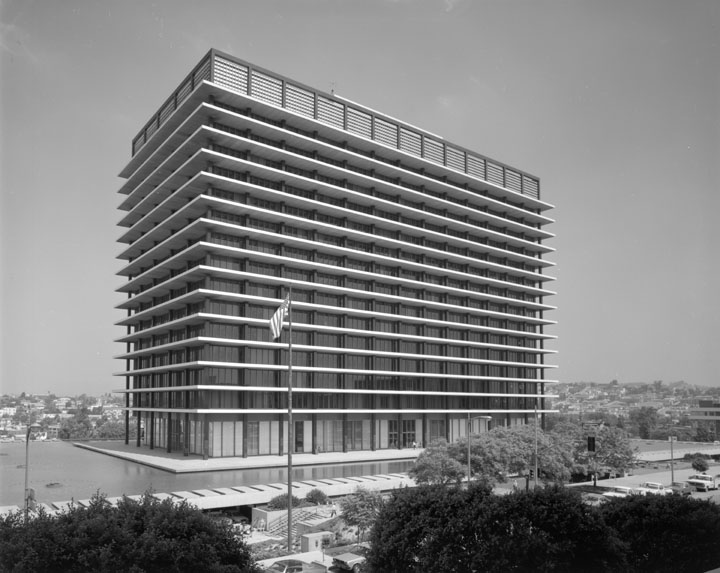 |
|
| The Los Angeles Department of Water and Power Office Building (Referred to as the GOB or JFOB).* |
Question #2
- What year was the General Office Building (GOB) renamed the John Ferraro Office Building (JFOB)? _______
Question #3
- What year was the JFOB designated a Los Angeles Historic-Cultural Monument? _______
Click HERE for answers and more information on the JFOB |
* * * * * |
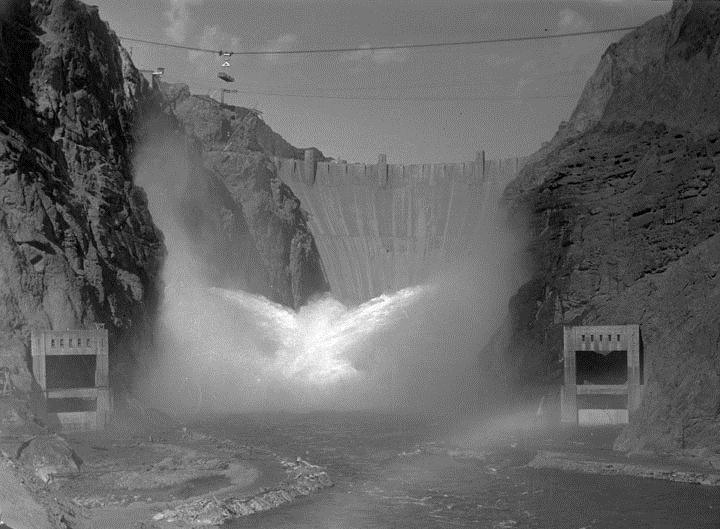 |
|
| (1936) - View showing the first time all 12 valves in the canyon wall outlets at Hoover Dam worked simultaneously, discharging Colorado River water. |
Background Ezra Scattergood pushed for a bill authorizing the construction of the Boulder Canyon Project (Hoover Dam). Despite attempts to discredit the project, Scattergood helped convince Congress in 1928 to pass the legislation and allow construction of the dam and a hydroelectric power plant. |
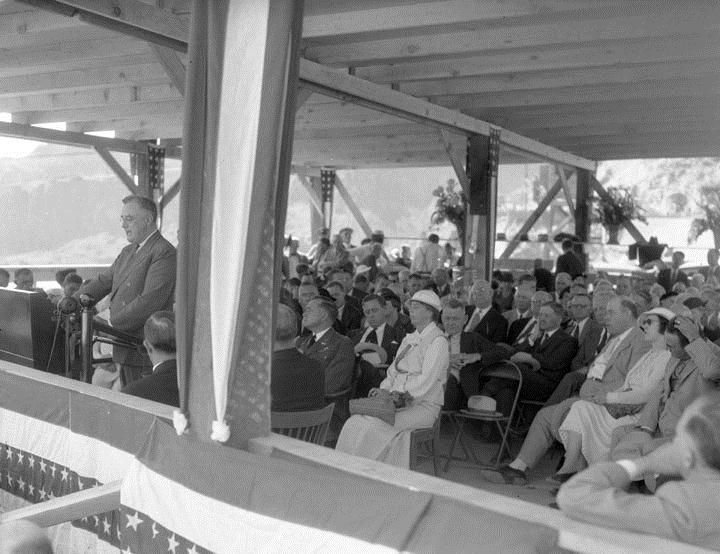 |
|
| (1935) – Dedication of Hoover Dam by President F. D. Roosevelt. |
Question #1
The above photo shows President F. D. Roosevelt giving a speech at the Dedication of Hoover Dam on September 30, 1935. Can you locate Ezra Scattergood on stage in the background?
 |
|
| (ca. 1936)* - View of the upper generator room at Hoover Dam, on the Nevada side, where there are eight generators. (The Arizona side has nine.) |
Question #2
What percentage of the L.A.’s power needs did Hoover Dam provide back in 1936?
|
Question #3
What percentage of L.A.’s power needs does Hoover Dam provide today?
|
Click HERE for answers and more information on Hoover Dam |
* * * * * |
Since the beginning of recorded history, earth-filled reservoirs have been used to help cities get through periods of drought. Los Angeles has been utilizing these types of reservoirs since the late 1800s. The following two photos show one of LA’s earliest water reservoirs, put into service in 1908.
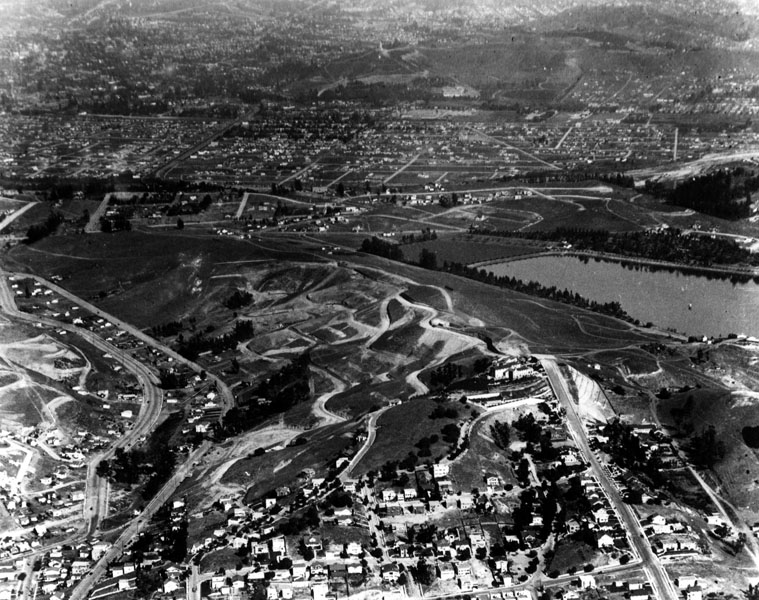 |
|
| (ca. 1924) - View looking north of the _____________Reservoir and surrounding area, with streets readied for new housing development. |
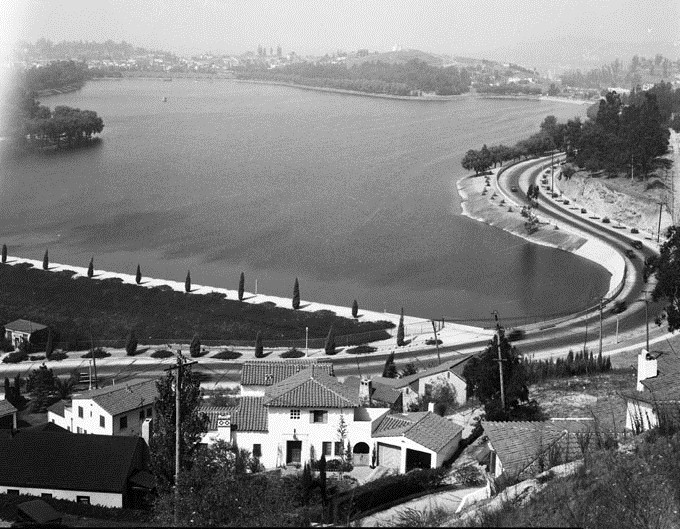 |
|
| (1930) - View of the ______________Reservoir named for _______________. The reservoir is an earth fill dam, asphalt concrete, with paved slopes. In 1989, it was designated LA Historic-Cultural Monument No. 422. |
1) What is the name of this reservoir located just north of downtown Los Angeles?
(Clue: The community it sits in was named after this reservoir.)
2) Who was the reservoir named after?
(Clue: It’s not gold.)
Click HERE for answer and more information on Early L.A. Water Reservoirs |
* * * * * |
Where's Waldo?
Can you locate William Mulholland in the following 1912 photo? Clue: He's wearing a hat....
 |
Click HERE for answer and more information on photo. |
* * * * * |
The photo below shows construction crews in cars and horse-drawn wagons in front of the City's first Water Department building. The building stood until 1939.
a) Where was the Water Department building located? __________b) What year was the Water Department (later DWP) formed? __________ |
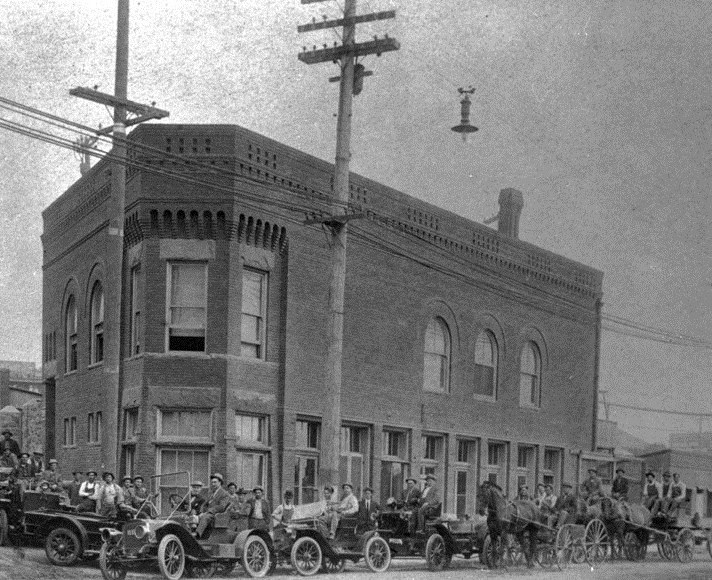 |
Click HERE to see more in Water Department's Original Office Building |
* * * * * |
Below is a photo showing a parking lot full of older model cars and horse-drawn carriages. This event occurred in the early 1900s and was one of the most significant milestones in the history of Los Angeles.
a) Name the event: __________b) What was the date of the event? __________ |
.jpg) |
Click HERE to see more in Opening of the Los Angeles Aqueduct |
* * * * * |
The photo below is not that of a time machine. It is the stator of a generator used in one of the first hydro power plants constructed by the Los Angeles Bureau of Power and Light (DWP).
a) What is the name of the power plant? __________b) Where is it located? __________ |
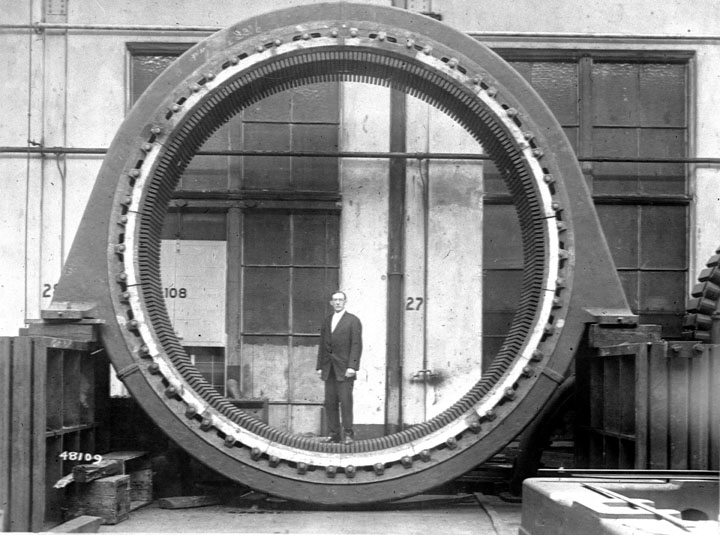 |
Click HERE to see more in Electricity on the Aqueduct |
* * * * * |
< Back
Menu
- Home
- Mission
- Museum
- Mulholland Service Award
- Major Efforts
- Board Officers and Directors
- Positions on Owens Valley and the City of Los Angeles Issues
- Legislative Positions on
Water Issues
- Legislative Positions on
Energy Issues
- Recent Newsletters
- Historical Op Ed Pieces
- Membership
- Contact Us
- Search Index